当前位置: Language Tips> 双语新闻
When pyjamas ruled the fashion world
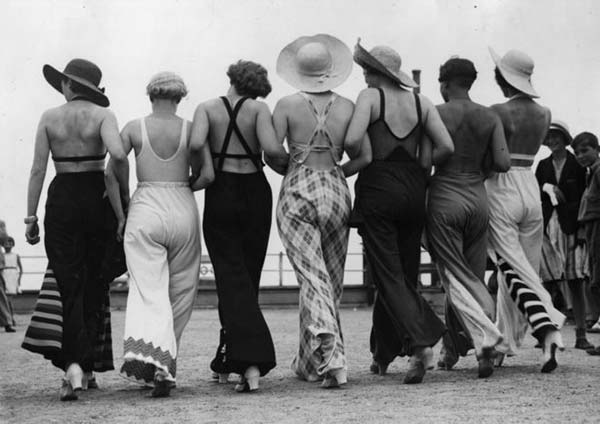
The head teacher of a British primary school has urged parents not to wear pyjamas when bringing their children in, for fear of setting them a bad example. But pyjamas, far from being seen as dowdy and scruffy, were once at the very apex of fashion.
英国一所小学的校长号召父母不要穿睡衣送孩子上学,以免给孩子树立不好的榜样。但睡衣并非一直是破旧和邋遢的象征,它曾经引领时尚潮流。
The Lido, Venice's most famous beach, has been known for more than 150 years for its sophistication. So, an advertising poster from 1927 comes as something of a surprise.
丽都(Lido)是威尼斯最有名的一片海滩,它的优雅迷人已经流传了150多年。因此,1927年的宣传海报便使众人惊叹不已。
It proclaimed to potential wealthy visitors that the Lido was "the beach of sunshine and pyjamas". Its sands and hotels were places where people could feel comfortable spending days and evenings relaxing and partying in a garment today associated with bedtime, convalescence or days slobbing out on the sofa.
当时,丽都对有消费潜力的富有游客们宣称,这里是“阳光和睡衣的沙滩”。在丽都,游客可以在沙滩和旅馆享受轻松愉快的日间和夜晚聚会。如今,睡衣总与睡觉、养病和窝在沙发上的邋遢日子相联系,而在当时,却是放松和愉悦的象征。
In a week where a head teacher in Darlington has told parents not to do the school run wearing pyjamas for fear of not setting a "good example" to their children, it's hard to believe they were ever haute couture.
近日,达灵顿(Darlington)一所小学的校长告诉父母在接送孩子时不要穿睡衣,担心这样不利于为孩子们树立一个好榜样。我们很难相信,当时睡衣就是高级的定制服装。
But the 1920s were a different time. While pyjamas - from the Hindi "paejama", meaning "leg covering" - had become established nightwear for men since the 1870s, it was seen as adventurous for a woman to wear trousers of any kind, especially in public.
但在20世纪20年代,情况完全不同:英文“睡衣”(pyjamas)一词起源于印度语“ paejama”,意为“遮盖腿部”。这种神似裙子的服装在19世纪70年代就已被男士定义为睡衣。不过,当时对女士来说,穿任何款式的裤子都是一种冒险,尤其是在公共场合。
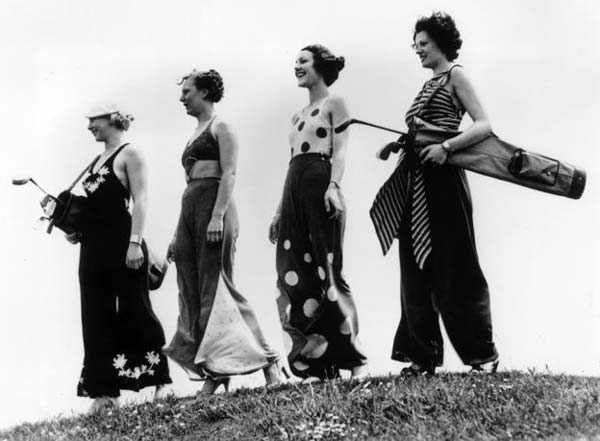
The force for change was the French fashion designer Gabrielle "Coco" Chanel, who decided baggy pyjama-style trousers - complete with a loose-fitting shirt or a sleeveless top - could combine elegance and comfort.
法国时尚设计师香奈儿改变了这种现状,她设计出了睡衣风格的宽松裤子,配上宽松的T恤和无袖上衣,简直就是舒适与优雅的结合。
As early as 1918, she began wearing "beach pyjamas". With their gender-confusing suggestion of the boudoir, they were seen as shocking, but such was Chanel's influence that they became popular among rich women by the mid-1920s.
在1918年早期,她开始穿“沙滩睡衣”。由于这种睡衣可能会混淆男女之间的性别差异,因此在当时引起了不小的震惊。但随着香奈儿影响的不断扩大,20世纪20年代中叶,沙滩睡衣在富有女子中间已经广受欢迎。
The up-and-coming resort of Juan-les-Pins on France's Cote d'Azur marketed itself on being less stuffy than rival destinations and became popularly known as "Pyjamaland" in English and "Pyjamapolis" in French, so commonly worn were they among its visitors. Some chose Chanel-style fashion pyjamas, but others, seemingly for fun, spent their days outdoors in actual bedtime pyjamas, complete with dressing gown.
位于法国蓝色海岸的朱安雷宾是一个风头正劲的旅游胜地。和其他旅游景点相比,它宣称此处不那么“闷热”,并作为“睡衣胜地”(Pyjamaland,法语作Pyjamapolis)闻名于世。因此,对这儿的游客来说,沙滩睡衣很常见。有人选择了香奈儿的时尚睡衣,而其他人,似乎只是为了玩乐,穿着睡衣或浴衣参加户外活动。
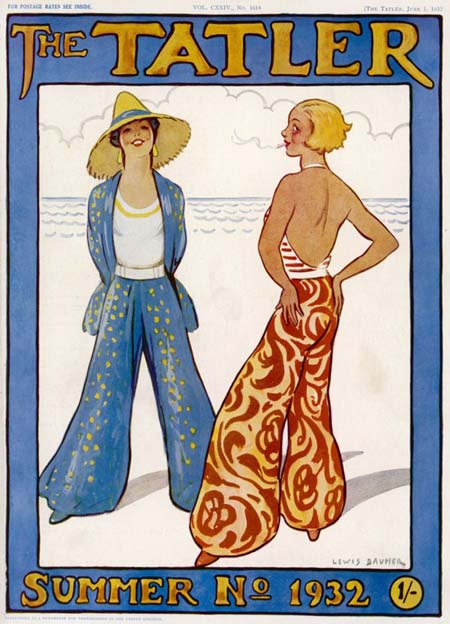
"There is a town in France, where summers start at the beginning of spring and ends at the end of autumn," wrote the journalist Robert de Beauplan in 1931. "There, you can see women wearing strange dresses. It's strictly speaking Pyjamapolis." In the same year, Vogue magazine was advertising pyjamas as "woollen suits for the beach".
记者德伯格兰德(Robert de Beauplan)在1931年写道:“法国有一个小镇,夏季从春季初一直延续到秋季末,在那儿,你会发现女人们都穿着奇怪的衣服。严格来说,那简直就是一座睡衣之城。”也就在那一年,《时尚》杂志把睡衣标榜为“沙滩上的毛制西服”。
In 1932, two women wearing brightly coloured pyjamas caused a stir on Brighton seafront as they promenaded while smoking pipes.
1932年,在布莱顿(Brighton)海滨区,两名女士身穿亮色睡衣,漫步海滩,嘴含烟斗。这一举动在当时引起一时轰动。
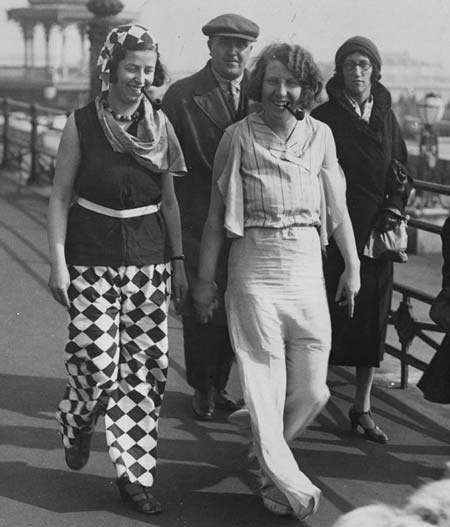
"Throughout the 1930s the styles spread further and could be seen lining the beaches of Britain, yet trousers for women remained somewhat taboo outside of the relaxed dress codes of the beach or the privacy of the home until later in the century," says fashion historian Amber Butchart.
时尚历史学家安伯•布查特(Amber Butchart)说:“20世纪30年代,这种睡衣风格开始广为流传。在英国沙滩上,你会发现人们几乎都穿着睡衣,但是除了休闲的沙滩睡衣或是家居服,女士仍然不能穿其他样式的裤子,直到20世纪后期,这一限制才慢慢放松。”
Chanel herself discovered this attitude on a visit to Juan-les-Pins. The story goes that a doorman refused her entry to a casino. Its owner, Edouard Baudoin, intervened, saying: "Mademoiselle Chanel, you are living proof that one must not be merely dressed, but well-dressed." The publicity seemingly did neither Baudoin or Chanel any harm.
香奈儿去朱安雷宾度假时,发现了人们对待睡衣的态度。这个故事要从看门人拒绝她进入俱乐部说起。而老板爱德华•波丹(Edouard Baudoin)处理这件事时,说:“香奈儿女士,你就是活生生的例子,一个人不仅要穿,更要穿出品味。”这件事对波丹和香奈儿都没啥影响。
By World War Two, the craze for pyjamas was fading, with the swimsuit overtaking it as the female beach clothing of choice. Chanel was again among those at the forefront of its popularisation. The post-war period saw the more revealing bikini take over.
直到第二次世界大战,人们对睡衣的狂热才逐渐消减,泳衣开始成为女性的不二选择。香奈儿再次走在大众化的前沿。战后,比基尼成为沙滩的主流服装。
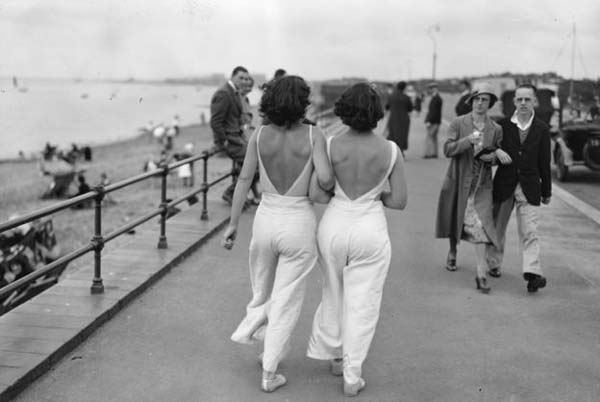
But Robert de Beauplan's observations are a reminder of the effect pyjamas had on the inter-war world. They gave "women an unprecedented look, more free, cheekier, and its relaxed attitude always remains tasteful", he wrote.
但德伯格兰德的记录提醒了我们,睡衣在两次世界大战之间的影响。他写道,睡衣“赋予女人前所未有的外表,更多的自由和更开放的行为。它带给人们的舒适放松的享受,让人回味”。
There were simple "classic" versions available, he added, and "more dressed-up" types, with a lower cut, especially at the back. "It's the afternoon outfit, for visits, tea, dancing and cocktails," wrote Beauplan. "There are also night pyjamas, which look like dresses from afar when you see them in casinos, until you see the person dance quickly the fox-trot and then, there's no mistaking."
他补充道,至今还保留一些“经典的”款式,更多的是“盛装”,领口低开,尤其是后背。他还写道:“还有下午套装,用来拜访、喝茶、跳舞或是出席鸡尾酒会。当然,也有晚宴睡衣,在俱乐部从远处看,就像裙子一样。但当你看到人们快速舞动着狐步时,你才会发觉,的确是睡衣。”
The world of fashion has seen a resurgence of interest in pyjamasas daywear recently, with some designers including them in their collections.
最近,睡衣再次风靡时尚界,一些设计师还专门设计了睡衣系列。
But they've become controversial again for a different reason. Kate Chisholm, head teacher of Skerne Park Academy in Darlington, County Durham, has complained that parents are turning up at school dressed in them. She's urged them to "dress appropriately in day wear", arguing this will set their children a better example, increasing pride and academic achievement.
由于各种原因,睡衣再次成为人们议论的焦点。达勒姆市(Durham)达令敦镇斯克恩公园学院(Skerne Park Academy )的校长凯特•奇泽姆( Kate Chisholm)曾抱怨,父母穿着睡衣送孩子上学。她号召父母“穿着得体”,并谈到这可以为孩子们树立一个好榜样,有利于自尊和学术成就的培养。
Similarly, in 2014, US fashion commentator Clinton Kelly remarked there had been a "downward spiral of style" over the previous decade. Adults who might pop to the local shop for a pint of milk or newspaper wearing slippers and pyjamas felt they had "permission not to care" about sartorial standards.
同样,2014年,美国时尚评论员克林顿•凯利(Clinton Kelly)认为,在过去的几十年,人们的风格品味在走下坡路。一些成年人穿着拖鞋和睡衣去当地商店买牛奶或取报纸,并且觉得他们无需在乎着衣标准。
Some of the Skerne Park parents, who have been vilified on social media, could at least take succour from one of Chanel's best known remarks: "It is always better to be slightly underdressed."
斯克恩公园学院的部分父母在社交媒体上遭到了批评,但他们至少可以从香奈儿的一句名言中寻得安慰:“有一点点不得体才更好。”
Gabrielle "Coco" Chanel
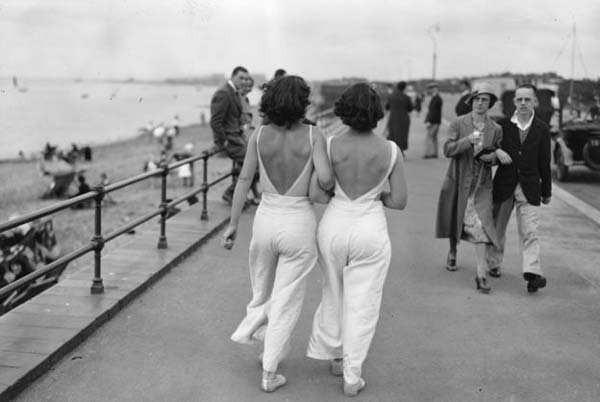
§ Born in 1883 in Saumur, France, she was raised in an orphanage, where she learned to sew
§ She worked as a singer, where she picked up the nickname "Coco", before opening her first clothes shop in 1910
§ In 1921, she launched Chanel No 5, still one of the world's best-selling perfumes, and later popularised the "little black dress"
§ During the Nazi occupation of France in World War Two, she had an affair with a German officer, moving to Switzerland after hostilities ended
§ Chanel returned to Paris in the early 1960s, her fashions once again becoming popular, and died at the Hotel Ritz in 1971
——————————————————
香奈儿
Coco Chanel
1883年,香奈儿出生于法国的索米尔(Saumur),在孤儿院长大,并在那学会了做针线活。
她当过歌手,由此而得绰号“Coco”,随后,在1910年,开了自己的第一家服装店。
1921年,她推出了香奈儿5号,至今仍是世界上最畅销的香水之一。之后设计的“小黑裙”也广受欢迎。
在第二次世界大战纳粹占领法国期间,她与一位德国军官有过一段恋爱。战后,搬到瑞士。
20世纪60年代早期,香奈儿回到巴黎,她的时尚理念再次得到人们认可。最后于1971年在里兹酒店去世。
英文来源:BBC
译者:心若水
审校&编辑:yaning
上一篇 : 不花钱学会四门外语的秘诀
下一篇 : 7项技能让你更具影响力
关注和订阅


电话:8610-84883645
传真:8610-84883500
Email: languagetips@chinadaily.com.cn